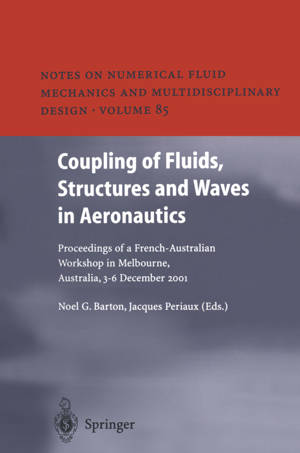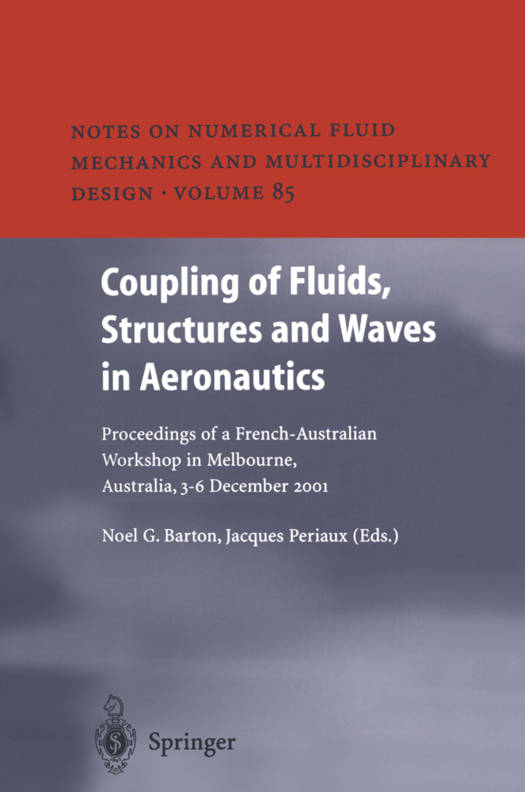
- Afhalen na 1 uur in een winkel met voorraad
- Gratis thuislevering in België vanaf € 30
- Ruim aanbod met 7 miljoen producten
- Afhalen na 1 uur in een winkel met voorraad
- Gratis thuislevering in België vanaf € 30
- Ruim aanbod met 7 miljoen producten
Zoeken
Coupling of Fluids, Structures and Waves in Aeronautics
Proceedings of a French-Australian Workshop in Melbourne, Australia 3-6 December 2001
€ 210,95
+ 421 punten
Omschrijving
This Volume contains the Proceedings of a French - Australian workshop held in Melbourne, Australia from 3-6 December 2001. Entitled "Coupling of Fluids, Structures and Waves in Aeronautics (CFSWA)", the workshop was principally organised by CSIRO Mathematical and Information Sciences, Dassault Aviation and CNRS. The main purpose was to explore new computational methods and tools for efficient multi-disciplinary design in aero- nautics. This enterprise strongly depends on modelling of coupled disciplines and development of associated multi-disciplinary simulation tools. As an example of the requirements, the original logo for the workshop illustrated coupled aeroelas- ticity, scattered radar waves and high lift problems. Optimisation is required with respect to mUltiple objectives under conflict. Among the many challenges to be addressed are mathematical, numerical and en- gineering problems involving coupled flows, structures and waves. Future prog- ress on these topics strongly depends on the physical and mathematical modelling of coupled disciplines and the development of associated multi-disciplinary simu- lation tools. Strong couplings require appropriate exchanges of different kinds of information: physical and geometrical description of models, coupling of Partial Differential Equations (PDEs) at interfaces, and specification of boundary condi- tions or multi-objective functions in optimisation or control problems. Validation of multi-physics software also requires ever more efficient and accurate graphic visualisation tools representing experimental and computational data stored in da- tabases.
Specificaties
Betrokkenen
- Uitgeverij:
Inhoud
- Aantal bladzijden:
- 318
- Taal:
- Engels
- Reeks:
- Reeksnummer:
- nr. 85
Eigenschappen
- Productcode (EAN):
- 9783642072949
- Verschijningsdatum:
- 9/12/2010
- Uitvoering:
- Paperback
- Formaat:
- Trade paperback (VS)
- Afmetingen:
- 156 mm x 234 mm
- Gewicht:
- 467 g

Alleen bij Standaard Boekhandel
+ 421 punten op je klantenkaart van Standaard Boekhandel
Beoordelingen
We publiceren alleen reviews die voldoen aan de voorwaarden voor reviews. Bekijk onze voorwaarden voor reviews.










